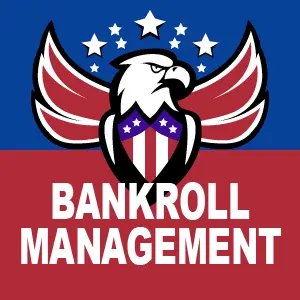Applying Effective Bankroll Management
Chris Wheeler | September 21, 2011

Bankroll management (BRM) refers to the management of a poker player’s funds. Once a player masters the art of effective BRM, he or she can protect these funds by never risking a large percentage of this money at any one time.
By implementing bankroll management effectively, we can allow for variance and still provide ourselves with the best possible opportunity to maximize profit while minimizing losses.
What limits should I be playing?
When it comes to No Limit Texas Hold’em, your bankroll should generally be 20 times the full buy-in of the limit you want to play. This means that if you really are hell-bent on playing that $2/$4 game, you’re not going to be able to play it safely without $8000 to play with.
As mentioned before, your $500 would best be invested in a 10c/25c game, where the full buy-in is $25 which, multiplied by 20, gives you $500.
As you move up into some of the higher levels ($5/$10 and up), you may want to accumulate up to 40 buy-ins before moving up levels to help deal with the more brutal swings that tend to occur at these levels.
What about tournaments?
When it comes to Sit & Gos and Tournaments, you’re going to need 40 buy-ins for the level of tournament you’re expecting to play. So if you’re going to be making a run at $10+$1 SNGs, you’re going to need to start with $440. You really shouldn’t be taking a shot at Full Tilt’s Fifty-Fifty tournament with a buy-in of $50+$5 unless you’ve got $2200 to back it up with in case you don’t cash.
Basic bankroll management table
| Blinds | Level | Bankroll |
|---|---|---|
| $0.05/$0.10 | NL10 | $200 |
| $0.10/$0.25 | NL25 | $500 |
| $0.25/$0.50 | NL50 | $1,000 |
| $0.50/$1 | NL100 | $2,000 |
| $1/$2 | NL200 | $4,000 |
| $2/$4 | NL400 | $8,000 |
| $3/$6 | NL600 | $12,000 |
| $5/$10 | NL1000 | $16,000 |
| $10/$20 | NL2000 | $40,000 |
| $25/$50 | NL5000 | $100,000 |
| $50/$100 | NL10000 | $200,000 |
- As you move up into some of the higher levels ($5/$10 and up), you may want to accumulate up to 40 buy-ins before moving up levels to help deal with the more brutal swings that tend to occur at these stakes.
Moving levels
As soon as your bankroll grows large enough to allow you to move up levels, you should do so as long as you feel you can beat the level. The higher the level, the greater the wins.
However, if you drop below the 20 buy-ins required to play that level, you will need to drop back down a level until you have built your bankroll back up. Don’t be too proud to drop levels—there’s no shame in it, it’s just sensible poker.
Taking a shot
Every poker player does it every once in a while. We can’t help ourselves.
There are times when we feel like moving up a level, even though our bankroll may not permit us to do so. Perhaps you’re on a hot run of cards and want to capitalize, or maybe you’re curious to test the waters at the next level.
There’s no real harm in this as long as it doesn’t become common-place and provided you:
- Don’t chase losses at this level—accept your losses and move back to the level you are properly bankrolled to play.
- Don’t get carried away by a few big wins—if your bankroll is still too small to make an official move to this level, remember you’re playing outside of it.
In summary
Being able to effectively manage a bankroll isn’t just a “feather in the cap” for accomplished poker players, nor should it be considered an advantageous optional extra. Effective bankroll management is an absolutely essential skill and a prerequisite for any player with aspirations of sustaining a poker career, whether in live or online games.
As the poker market matures with more players learning how to play the game well, bankroll management is what separates good players from successful players. Which would you rather be?
Key points to remember
- Be disciplined: Stick to your bankroll management plan strictly. Avoid the temptation to move up in stakes just because you are on a winning streak.
- Adjust for skill levels: Higher limits often feature more skilled opponents, which can lead to higher variance. Adjust your bankroll accordingly by ensuring you have a larger cushion at higher stakes.
- Track Your Progress: Keep detailed records of your sessions, noting wins, losses, and critical hands. This will help you identify leaks in your game and areas where you can improve.
- Don’t chase losses: If you experience a downswing, don’t move up in stakes to try and win back your losses quickly. Stick to your bankroll guidelines and move down in stakes if necessary.
- Stay patient: Building a bankroll and moving up in stakes takes time. Stay patient, stick to your plan, and avoid taking unnecessary risks.
By adhering to these bankroll management principles, you can protect your funds, manage variance effectively, and give yourself the best chance to maximize profits in the long run.